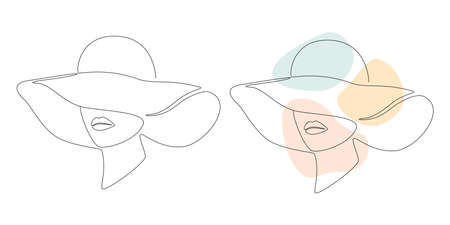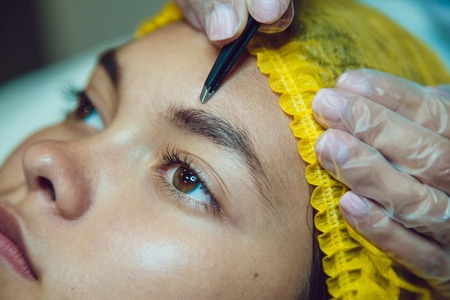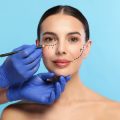Understanding Radiofrequency Facials
Radiofrequency (RF) facials have swiftly become a mainstay in the UK’s beauty and skincare scene, offering a non-invasive alternative for those seeking rejuvenated, youthful skin. But what exactly are RF facials, and why are they making such waves across London salons and beyond? At their core, radiofrequency facials harness safe, controlled energy to heat the deeper layers of the skin. This gentle yet effective process stimulates collagen and elastin production—two essential components for maintaining firm, supple skin. Unlike more invasive procedures, RF treatments require minimal downtime and are suitable for a wide range of skin types, making them an accessible option for many. The technology behind RF facials is grounded in years of medical research and is celebrated for its ability to tighten sagging skin, reduce fine lines, and enhance overall radiance without needles or surgery. In a culture that values both natural beauty and subtle enhancement, it’s no surprise that British men and women are turning to radiofrequency facials as their go-to solution for graceful ageing and refreshed complexions. Whether you’re new to advanced skincare or looking to elevate your routine, understanding the fundamentals of RF technology is the first step towards achieving noticeable, confidence-boosting results.
2. What to Expect at Your Consultation
Embarking on your journey with radiofrequency facials begins with a thorough consultation. In the UK, reputable practitioners will always prioritise your safety and satisfaction, ensuring that you feel comfortable and well-informed from the very start. Here’s what typically happens during your initial appointment:
Your Personal Assessment
The practitioner will begin by assessing your unique skin type and condition. This is a collaborative conversation where you’re encouraged to share your concerns and aspirations for your skin. Don’t be shy—honest communication helps tailor the treatment to your needs.
Health History Review
To ensure the procedure is both safe and effective, youll be asked about your medical history. Expect questions covering:
| Category | Details Explored |
|---|---|
| Skin Type & Condition | Sensitivity, pigmentation, previous treatments, current skincare regime |
| Medical Background | Allergies, ongoing medications, existing conditions (e.g., eczema, rosacea) |
| Lifestyle Factors | Smoking habits, sun exposure, hydration levels |
Desired Outcomes & Expectations
This is your opportunity to articulate what you hope to achieve—whether it’s firmer skin, reduced fine lines, or an overall glow. A skilled practitioner will discuss realistic outcomes based on your starting point and help set achievable goals.
Questions You Might Be Asked:
- What specific changes would you like to see in your skin?
- Have you had any aesthetic treatments before?
- Are there any upcoming events youre preparing for?
- How much downtime can you accommodate?
The consultation concludes with an open discussion of the proposed treatment plan. You’ll receive tailored advice regarding preparation, aftercare, and the number of sessions recommended. Remember: no question is too small—your comfort and confidence are paramount as you move forward.

3. The Treatment Experience
Undergoing a radiofrequency (RF) facial at a British clinic is a straightforward and comfortable process, designed to put you at ease from start to finish. Here’s what you can expect during your session, so you can arrive feeling prepared and confident.
Arrival and Preparation
On arrival, you’ll be greeted by your practitioner who will guide you to the treatment room. Most clinics recommend wearing comfortable clothing, as you may need to remove your top or change into a provided gown depending on the areas being treated. Rest assured, your privacy and modesty are always respected throughout.
The Step-by-Step Procedure
- Cleansing: Your skin will first be thoroughly cleansed to remove makeup, oils, and impurities, ensuring optimal results from the RF treatment.
- Application of Conductive Gel: A cool gel is applied to the treatment area. This not only helps the device glide smoothly over your skin but also enhances the effectiveness of the radiofrequency waves.
- Radiofrequency Delivery: The practitioner will use a handheld RF device, moving it in gentle, circular motions across your face or targeted area. You may feel a gradual warming sensation, which is perfectly normal and should never become uncomfortable.
- Monitoring Comfort: Throughout the session, your practitioner will regularly check in with you to ensure the heat remains within a soothing range. If anything feels too warm or unpleasant, don’t hesitate to speak up – British clinics pride themselves on patient care and comfort.
Sensations to Expect
The most common sensation is gentle warmth – many describe it as similar to a relaxing hot stone massage for the face. Some clients notice mild redness afterwards, but this usually fades within an hour or two. There’s no pain involved; if anything, most find the experience quite calming.
Treatment Duration
An average RF facial session in the UK lasts between 30 to 60 minutes, depending on the size of the treatment area and whether additional procedures (like cleansing masks or serums) are included. Afterward, you can immediately return to your day without any downtime – making it ideal for those with busy schedules or even a lunchtime pick-me-up.
4. Aftercare and Recovery
After your radiofrequency facial, adhering to British aftercare standards is essential to ensure the best results and a smooth recovery. The UK’s skincare professionals emphasise a gentle, nourishing approach in the days following your treatment. Here’s what you need to know:
British Aftercare Standards
Clinics across the UK recommend specific steps to protect your skin post-procedure. These guidelines are designed to minimise irritation and maximise the effectiveness of your facial.
| Aftercare Step | Description | Typical Duration |
|---|---|---|
| Avoid Sun Exposure | Keep out of direct sunlight and apply SPF 30 or higher. | At least 1 week |
| No Harsh Products | Avoid retinol, acids, and exfoliants on treated areas. | 3-5 days |
| Gentle Cleansing | Use mild, fragrance-free cleansers only. | Until redness subsides |
| No Hot Baths or Saunas | Prevent overheating your skin for optimal healing. | 48 hours |
| Avoid Makeup (if possible) | Let your skin breathe and recover naturally. | 24-48 hours |
Tips to Maximise Results
- Hydrate Generously: Drink plenty of water and use a high-quality moisturiser to support skin regeneration.
- Nourish Your Skin: Look for serums rich in hyaluronic acid or peptides—these ingredients are widely recommended by UK practitioners for their restorative properties.
- Stick to Your Clinic’s Advice: Always follow the specific guidance provided by your practitioner; British clinics take aftercare seriously, tailoring recommendations to your unique needs.
- Schedule Follow-Up Appointments: For ongoing improvement, consider booking a review with your therapist. Many London-based clinics include this as part of their service package.
Looking After Your Skin in the Days Ahead
Your skin may feel warm or slightly sensitive immediately after the treatment—this is completely normal. Be patient with the process; visible improvements develop gradually over several weeks. During this time, prioritise comfort, protection, and gentle care. If you notice unusual redness or discomfort persisting beyond a few days, reach out promptly to your provider for reassurance and advice.
A Final Note of Encouragement
Treat yourself kindly as you enjoy the benefits of your radiofrequency facial. The foundation of glowing, resilient skin lies not just in professional treatments but also in consistent, thoughtful aftercare—a hallmark of British skincare culture. Trust the process and remember: every small act of self-care adds up to radiant results.
5. Results: What’s Realistic and When to Expect Them
If you’re considering a radiofrequency facial, it’s absolutely vital to set realistic expectations about the results—especially when seeking treatment here in the UK, where climate, lifestyle, and skin types can all influence outcomes. Let’s break down what you can genuinely anticipate, how quickly you might see improvements, and why patience paired with professional guidance is your best friend.
Understanding the Timeline for Visible Results
Unlike some instant-fix beauty treatments, radiofrequency facials offer gradual yet noticeable changes. Most clients begin to see subtle improvements in skin firmness and texture within 1-2 weeks after their first session. However, optimal results typically emerge after a course of 4-6 sessions, spaced out over several weeks as recommended by your practitioner. This phased approach allows your skin’s natural collagen production to kick in—so don’t be discouraged if you don’t wake up glowing the very next day.
What Improvements Can You Expect?
Based on experiences from clinics across Britain, typical enhancements include:
- Smoother, tighter skin texture
- Reduced appearance of fine lines and mild wrinkles
- A more lifted jawline and cheek area
- Improved radiance and evenness of skin tone
It’s important to remember that while radiofrequency facials are effective for rejuvenation, they won’t dramatically alter your features or replace surgical procedures like facelifts. The improvements are subtle yet confidence-boosting—perfect for those who want natural enhancement rather than drastic change.
The Importance of Realistic Goals
Your journey is uniquely yours. Genetics, age, lifestyle habits (like smoking or sun exposure), and even the British weather can affect both your skin’s baseline condition and its response to treatment. That’s why a thorough consultation is so essential: it helps you and your aesthetician align on what’s achievable for you specifically. Remember, setting realistic goals isn’t about lowering standards—it’s about celebrating every small victory on your path to radiant confidence.
In summary, radiofrequency facials offer a gentle yet effective route to fresher-looking skin when approached with patience and realistic expectations. With commitment and the right professional support, you’ll notice your complexion becoming firmer, smoother, and more luminous—just in time for that upcoming holiday or special event.
6. Choosing a Qualified Practitioner in the UK
When it comes to radiofrequency facials, selecting the right practitioner is absolutely essential for both your safety and your results. The UK boasts a wealth of skilled professionals, but not all are created equal. Here’s how to make sure you’re in the best hands.
Check Credentials and Certifications
Always ensure your practitioner holds relevant qualifications and certifications in aesthetic treatments, specifically radiofrequency technology. In the UK, practitioners should ideally be registered with reputable bodies such as the General Medical Council (GMC), Nursing and Midwifery Council (NMC), or be members of respected organisations like the British Association of Cosmetic Nurses (BACN) or the British College of Aesthetic Medicine (BCAM). Don’t hesitate to ask to see their certificates or registration details—any genuine professional will welcome your diligence.
Verify Experience and Specialisation
Experience counts for a lot in aesthetics. Ask how long they’ve been performing radiofrequency facials and whether they specialise in this treatment. A seasoned practitioner will be able to explain the procedure clearly, discuss expected outcomes, and tailor their approach to your skin’s unique needs.
Research Reviews and Recommendations
Word-of-mouth remains one of the most powerful tools at your disposal. Look up reviews on trusted UK platforms such as Trustpilot or RealSelf, and consider seeking recommendations from friends or family who have had similar treatments. Positive testimonials and consistent client satisfaction are strong indicators of quality care.
Assess Clinic Standards
The environment matters just as much as the expertise. Visit the clinic beforehand if possible—reputable providers maintain spotless, welcoming spaces that adhere strictly to hygiene regulations set by local health authorities. Ask about their protocols for infection control and aftercare support.
Trust Your Instincts
Your comfort and confidence are paramount. During your initial consultation, pay attention to how you’re treated: Are your questions answered thoroughly? Do you feel listened to and respected? If something feels off, don’t be afraid to walk away—your wellbeing should never be compromised.
Choosing a certified, experienced practitioner ensures you receive not only the highest standard of care but also peace of mind throughout your radiofrequency facial journey. Take your time, do your research, and trust yourself to make an informed decision—you deserve nothing less.


